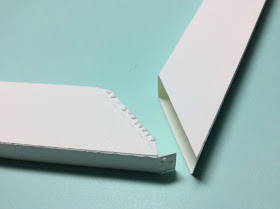Sunday, December 24, 2023
Twelve Hexagon Shaped Christmas Ornaments
Wednesday, December 20, 2023
Santa's Helpers Making Toys - A ZigZag Card
Monday, December 18, 2023
An Appliquéd Gingerbread Man Gift Bag Using a TurtleStitch Embroidered Design
Today I want to showcase my latest TurtleStitch project. It is an appliquéd Gingerbread man gift bag. Turtlestitch does not have a fill pattern. A good replacement is to use fabric as a fill pattern. When programming in TurtleStitch, the outline of the design is coded twice - once as a running stitch and the second time as a satin stitch. (Directions on how to embroider the design follow.)
Attach a backing fabric with a stabilizer to your hoop. Float another piece of fabric on top of the backing fabric on your hoop. This top layer will be the fabric for the Gingerbread man. It will be sewn down with a running stitch. Once the running stitch is complete, the embroidery machine will stop because of the "set color" command. Remove the hoop from the machine (do not remove the fabric from the hoop) and cut away the outer edge of the gingerbread man fabric with scissors. Try to get as close to the edge of the gingerbread man without cutting the running stitch. Reattach the hoop. Satin stitch the remaining stitches.
Tuesday, December 12, 2023
A North Pole Diorama With Elves
Monday, December 11, 2023
An Elf Rubber Band Pop-Up Card
A Boy and Girl Elf Christmas Tree Ornament
A STEM Project: Converting a Silhouette Studio File Into a 3D Print File In Tinkercad and Making a Slide Together Race Car
Using my Silhouette software, I created a race car body and then added tabs to the sides so that the pieces could slide into one another to be 3D printed. Each tab was 2 mm and then the slot that it slides into needs to be 2.5 mm for tolerance. I did this by using the Offset window. The Offset should be .25 mm with a corner offset and then apply the offset. The result is the tolerance needed to slide into one another. (In Preferences, I changed the unit of measurement to millimeters. I found it easier to manipulate in millimeters to be consistent with the 3D printer unit of measurement.
Monday, November 13, 2023
One Tough Puzzle Reimagined
My latest obsession is jigsaw puzzles. I learned that there are people who can put a 500 piece puzzle together in about 30 minutes. I wondered how long it would take for me to do this task. I purchased a Ravensberger puzzle called Circle of Colors: Donuts. It took me three hours to complete this puzzle. Here is a link to the puzzle https://www.ravensburger.us/products/jigsaw-puzzles/adult-puzzles/circle-of-colors-donuts-17346/index.html
While it was a lot of fun to put the puzzle together, I don't think I am close to becoming a puzzle champion. However, I can make a puzzle easily using my Silhouette software. In this blog posting, I have reimagined a puzzle called "One Tough Puzzle". The puzzle is no longer produced but you can find a copy on Ebay. The puzzle is just nine pieces that can be assembled together but there is only one way that the puzzle will fit together correctly. There are over 300,000 wrong ways to put this puzzle together but just one right way! My puzzle has the same results.
Saturday, November 11, 2023
A STEM Project: Converting a Silhouette Studio File Into a 3D Print File In Tinkercad and Making a Puzzle to Learn About 3D Printing Tolerances of the Ender 3 V3 SE
I was amazed at how easy it was to convert any Silhouette Studio file into a file to be printed with my Ender 3 V3 SE, 3D printer in Tinkercad. TinkerCad is a free 3D modeling program, http://tinkercad.com.
Using the Silhouette Studio Business Edition (you need to have this upgrade), save your file as an SVG. The project designed in the Silhouette software should not be bigger than your 3D printer space. For my Ender 3 printer, the size is 8.6 x 8.6 x 9.8 inches. While you can resize it later, it is easier to stay within your limitations of the size of your 3D printer. As an aside, if it is a large project, don't cram the entire project onto one Silhouette workspace with little space between pieces. Break up the project into different Silhouette Studio files. Also, do not save any work outside of the viewable area in Silhouette as everything is copied to the SVG file.
At the end of this tutorial about Tinkercad, I will explain how I created the print tolerance puzzle using the Silhouette software because I wanted to know how close puzzle pieces had to be in order to slide into one another easily after being 3D printed. As a conclusion, I determined that I like .014 inch tolerance for my Ender 3 printer.
In TinkerCad, create an account and then Create a 3D Design























































